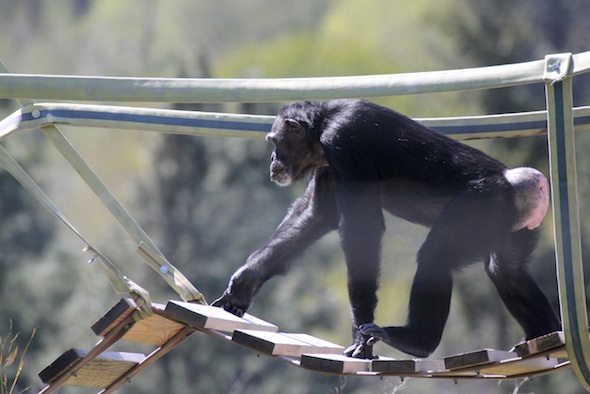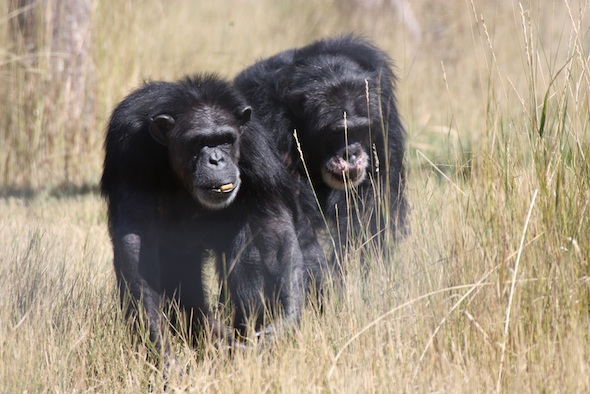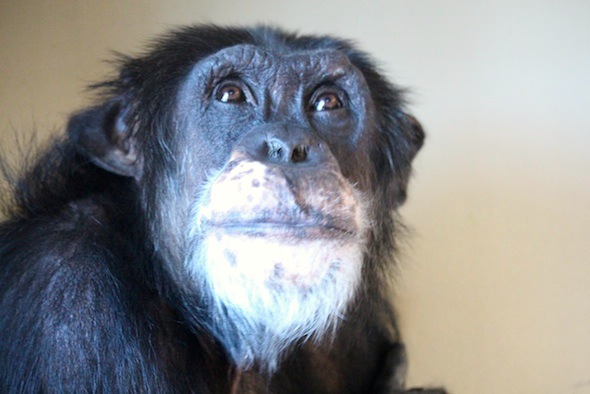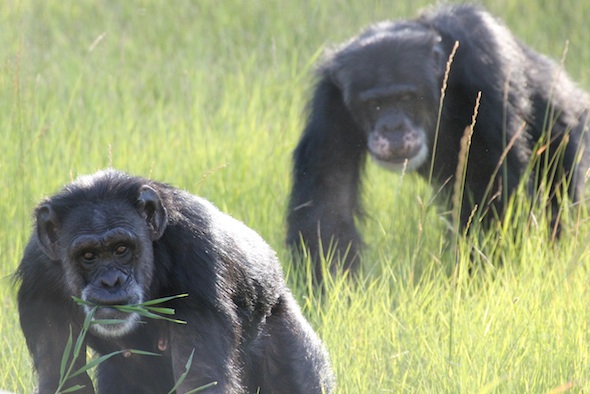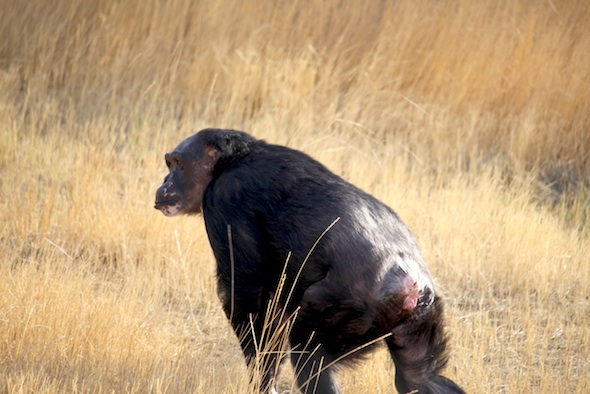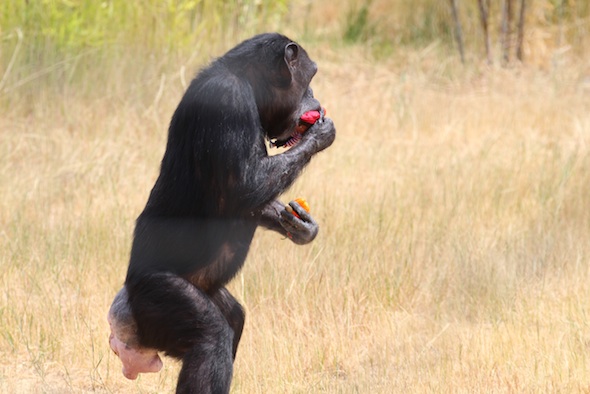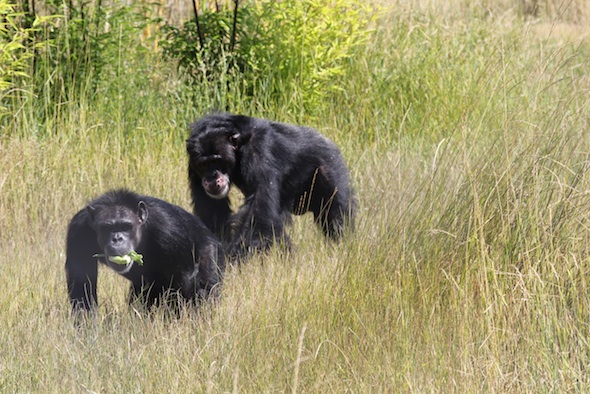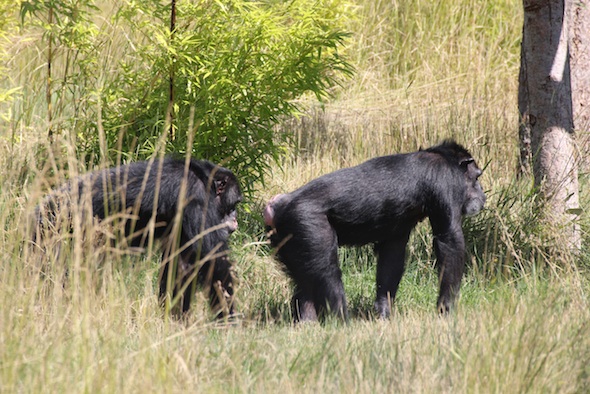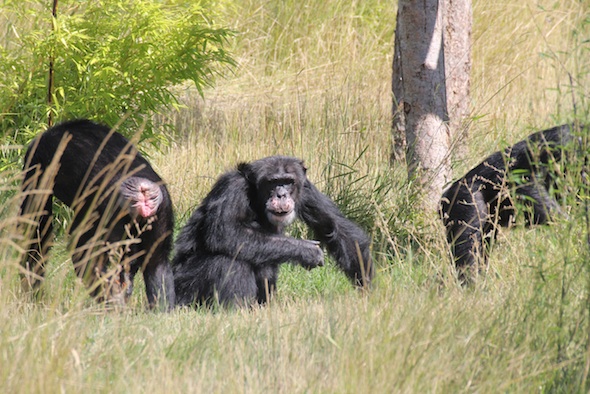Upon seeing chimpanzees for the first time, most people are struck by the extensive physical similarities between our two species, but there’s one notable difference that also catches everyone’s attention…
What’s wrong with their butts?
Chimpanzees, along with many other primates such as baboons and macaques, advertise their fertility by means of sexual swellings. As they approach ovulation, ovarian hormones induce the skin around their genitals to swell and take on a pink hue, an effect known as tumescence. Following ovulation, other hormones cause the swelling to subside and the roughly 35-day menstrual cycle begins again.
Why does this happen? Believe it or not, no one really knows for sure. It could be that it promotes paternal care by increasing the certainly that a particular male was the father of a female’s offspring. Or it could increase competition between males for mating access, thereby helping females filter for males with greater fitness. Or it could provide more immediate benefits to the females, as the males must work to protect them during their consortships. The list of hypotheses goes on, but none seem to be fully supported by the data on their own. In all likelihood, it is some combination of these factors. Interestingly (to primatologists, anyway), a recent study of free-living bonobos found that while they exhibit sexual swellings, their swellings do not reliably indicate fertility as they do in their chimpanzee cousins. Like humans, it seems that bonobos conceal ovulation. Bonobo societies are structured very differently than chimpanzee societies – they are quite famously female dominated – so it may be that a different evolutionary strategy was required.
One thing is for sure – swellings have a significant effect on male chimpanzees. Male chimpanzees aren’t exactly the more level-headed of the two sexes to begin with, but when tumescent females are present, all bets are off. Those big, pink backsides make the females incredibly attractive to the males and it can ignite a lot of testosterone-fueled behavior. In addition to an overall uptick in group tension and aggression, one result we often see is a behavior called mate guarding.
I remember learning about mate guarding the hard way when volunteering at another sanctuary. I was just getting to know two young adult chimps named Jethro and Rachel and I enjoyed interacting with both of them each time I visited. Then one day, all I did was say hello to Rachel and before I knew it, Jethro had spit a huge mouthful of water directly in my face. The lesson was clear: Rachel was off limits when she had her swelling.
We don’t see mate guarding per se here at CSNW, but that’s not to say that Burrito is unaffected by the swellings of the females in his group. He loves them. He loves them so much that he follows the girls wherever they go when they have their swellings. He loves them so much that he sleeps on the floor below the benches where the girls makes their nests so that he can stare at them all night.
Sadly, Burrito never exhibits any other mating behavior. Many chimps raised in unnatural environments like laboratory nurseries or human homes never develop these skills, despite some rather obvious biological urges. But while his interest in the girls may be limited to looking, he is unrelenting. In the wild, the young, tumescent females – dubbed “pink ladies” by Jane Goodall – are said to like the attention it brings them. My guess is that Burrito’s group mates would gladly send him off on a vacation one week each month if they could.
Among the Cle Elum Seven, only Annie, Jamie, and Jody experience sexual swellings. Foxie and Missy had complete hysterectomies shortly before coming to the sanctuary due to the discovery of uterine tumors during their pre-shipment physicals. As a result, they no longer experience the same estrogen and progesterone cycles that govern these swellings. And while we have no record of Negra undergoing a hysterectomy, she doesn’t cycle either. Menopause isn’t common in chimpanzees, but just as we see in humans, there are other factors that can disrupt or cease menstrual cycles.
There is a lot of natural variation in the size of the females’ swellings, and on top of that, physical trauma to the sex skin can cause it to lose its shape. So some swellings, like Annie’s, are barely noticeable, while others, like Jody’s, are so big they make sitting down difficult. According to Burrito (and much of the scientific literature) it seems that bigger is generally better, but that probably depends on your perspective.
